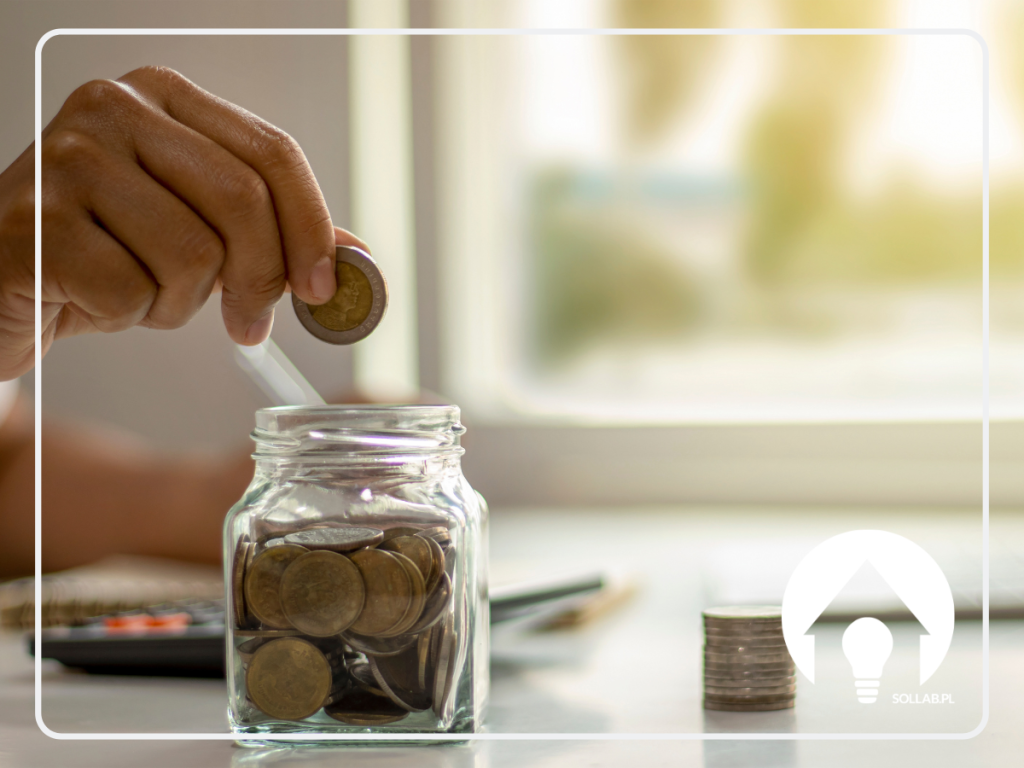How much energy storage is enough?
Energy storage makes it possible to become independent of the grid supply. Choosing the right energy storage is crucial to the efficient and cost-effective operation of a photovoltaic system. Energy storage allows you to store excess electricity produced by photovoltaic panels so that it can be used during periods of less sunshine or at night. How long will a domestic energy store last? What are the benefits of such a solution? Is it worth investing in? Check it out!
What is energy storage?
An energy storage facility is a device or set of devices that stores electrical energy, allowing it to be used at a later date. In practice, this means that an energy store is a kind of reserve that increases energy independence and allows electricity consumption to be optimised.
How do I choose the power of energy storage?
When choosing the right energy storage capacity, it is crucial to understand the actual energy needs in our household. Here are some steps to help you make the right choice:
- Energy consumption analysis: How much energy do you use during the day and night? By analysing our electricity bills, we can most easily deduce the energy consumption of our home.
- Estimating surplus production: If you already have a photovoltaic installation it is essential to check how much surplus energy it generates. This data will allow you to determine how much energy can potentially be stored.
- Consideration of the wear profile: Consider what your energy needs are at night or at times when the photovoltaic panels are not able to produce enough electricity.
- Selecting the right capacity: The most commonly chosen energy storage capacities for households range from 3 kWh to 15 kWh, but there are also larger systems designed for industry. Typically, a 10 kWh storage capacity will allow an average single-family home to be powered overnight.
- Provision of space for expansion: If you foresee an increase in your energy consumption in the future, it is worth choosing energy storage that allows you to expand capacity by adding more modules.
- Investment in technology: The latest energy storages offer longer life, greater efficiency and a range of features that make energy management easier.
How much energy storage is enough?
The answer to this question depends on two factors: the storage capacity and the current energy consumption. The exact operating time of an energy storage facility with a specific capacity is difficult to determine, as it depends on the individual energy demand of the building. The lower the power consumption of household appliances, the longer the storage will run without recharging. For example, an energy storage unit with a capacity of 10 kWh can fully meet the daily energy requirements for a household consuming an average of 10 kWh per day. If consumption is higher or lower, this storage will last shorter or longer respectively. It is also important to take into account seasonal fluctuations in energy consumption and production.
Cost-effectiveness of investing in storage for photovoltaic installation
Is it profitable to invest in electricity storage? Here it depends on what the investor's objective is. A photovoltaic installation with backyard energy storage provides higher returns. In Poland, there is the problem of installations being switched off by too much voltage in the outdated grid infrastructure, which is unable to receive the energy from photovoltaics. With energy storage, this problem can be solved. While the device is charging during the day, the electricity supply to the grid is lower, i.e. the voltage does not increase and the installation does not shut down.
Benefits of energy storage
Choosing the right energy storage has a number of benefits for users of photovoltaic systems. By storing excess energy produced by photovoltaic panels, you can reduce your dependence on the power grid. Energy storage allows you to use energy when the price is lowest. It allows you to recharge your batteries during periods of overproduction (e.g. during the day). In addition, energy storage supports the sustainable use of renewable energy sources, minimising the need to use conventional coal or gas sources. This enables users to contribute to the reduction of CO₂ and other pollutants. It also allows them to reduce their electricity bills by making the most of their own cheap energy. It is a particularly cost-effective solution for households and businesses with high energy demands.
In summary, how long an energy storage unit will last depends mainly on what equipment it is intended to power and its capacity. Energy storage is an investment that not only provides energy security and savings, but also promotes a more sustainable and environmentally friendly way of managing energy.
















